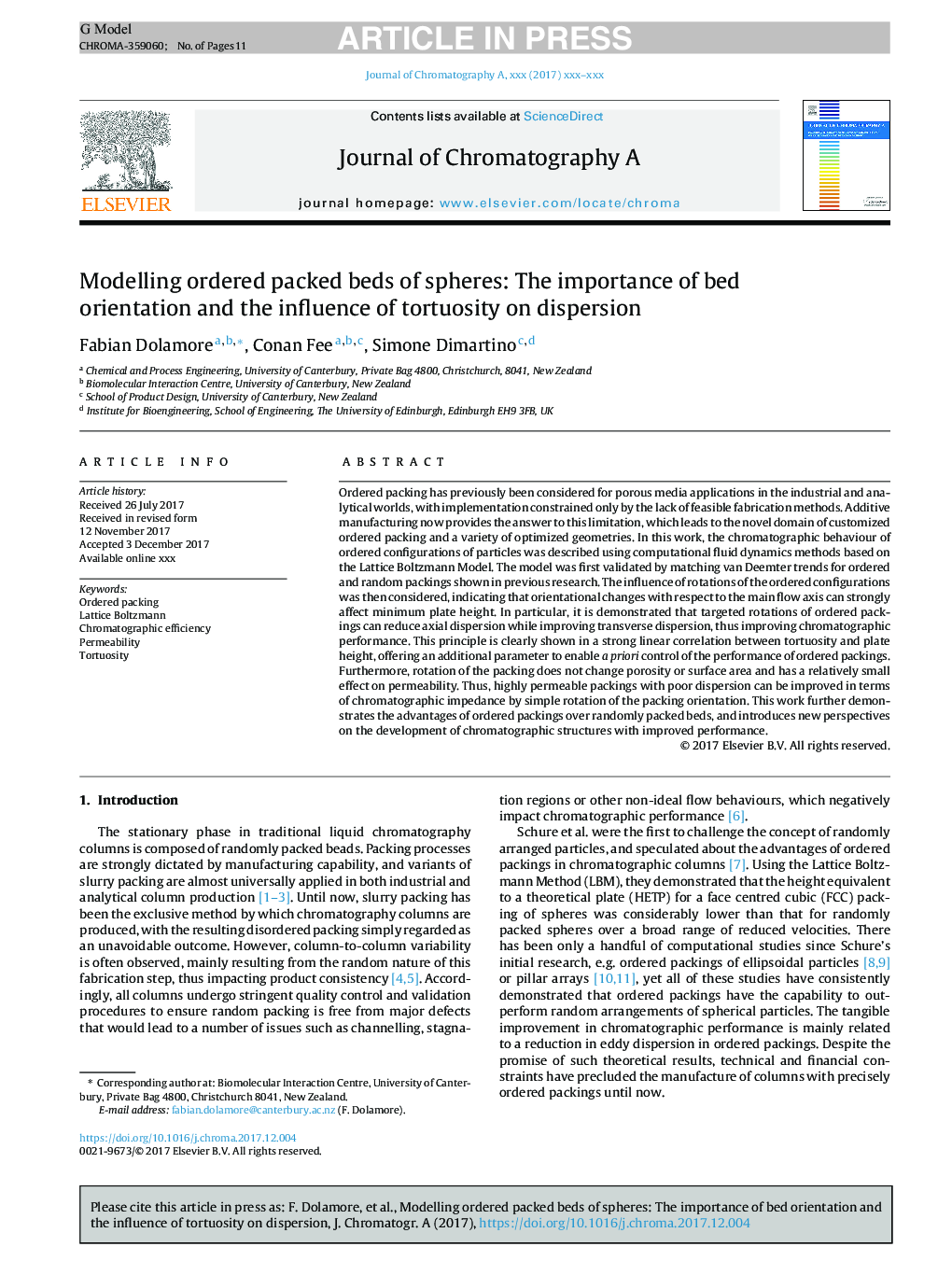| Article ID | Journal | Published Year | Pages | File Type |
|---|---|---|---|---|
| 7609237 | Journal of Chromatography A | 2018 | 11 Pages |
Abstract
Ordered packing has previously been considered for porous media applications in the industrial and analytical worlds, with implementation constrained only by the lack of feasible fabrication methods. Additive manufacturing now provides the answer to this limitation, which leads to the novel domain of customized ordered packing and a variety of optimized geometries. In this work, the chromatographic behaviour of ordered configurations of particles was described using computational fluid dynamics methods based on the Lattice Boltzmann Model. The model was first validated by matching van Deemter trends for ordered and random packings shown in previous research. The influence of rotations of the ordered configurations was then considered, indicating that orientational changes with respect to the main flow axis can strongly affect minimum plate height. In particular, it is demonstrated that targeted rotations of ordered packings can reduce axial dispersion while improving transverse dispersion, thus improving chromatographic performance. This principle is clearly shown in a strong linear correlation between tortuosity and plate height, offering an additional parameter to enable a priori control of the performance of ordered packings. Furthermore, rotation of the packing does not change porosity or surface area and has a relatively small effect on permeability. Thus, highly permeable packings with poor dispersion can be improved in terms of chromatographic impedance by simple rotation of the packing orientation. This work further demonstrates the advantages of ordered packings over randomly packed beds, and introduces new perspectives on the development of chromatographic structures with improved performance.
Related Topics
Physical Sciences and Engineering
Chemistry
Analytical Chemistry
Authors
Fabian Dolamore, Conan Fee, Simone Dimartino,
